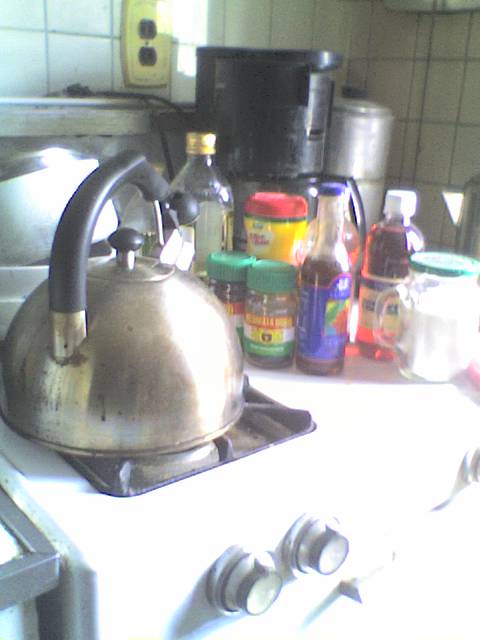Filipino food is on the rise here in the States.It's no wonder.It's a cuisine full of rich flavors and tastes, from a milky sweetness to a mouth puckering sour.No wonder the cuisine is popular.It' 's full of exciting flavors melded together to create a memorable taste.
Ligaya Mishan, who normally writes the New York Times Food section's restaurant reviews, wrote this interesting article about the cuisine. Thanks to the influx of immigrants from this archipelago of seven thousand islands, Filipino foods are fast becoming part of the American culinary landscape.The cuisine is different from its' south Asian neighbors.Where their dishes are fiery , sparked with chilis, Filipino recipes are varying degrees of sour.Vinegar is a main ingredient in many, used for centuries as a type of preservative. Since the islands are tropical, meats spoil easily, Vinegar is a way to keep them .One of their most ancient of dishes, kinilaw, possibly the precursor to seviche, is fish soaked in suka, extracted from sugar cane or sap from coconut trees or nipa palms. Another Filipino staple, daing na bangus which is milkfish, a tuna like fish, deboned. splayed and then soaked in vinegar.overnight. It's then crisped in a pan for a crunchy outside however the inside can be eaten with a spoon,thanks to the vinegar soaking.Even their version of spring rolls, or lumpia are dipped in a garlic laced dip called savsavan.
Adobe is the second flavor that define Filipino cuisine.Its' method of making and ingredients predate the Spanish name for it. At its' base it's meat being braised in vinegar and garlic for a long time. Other ingredients are added and that's when the recipe varies.some put in a dash of soy sauce while others stir in achuete oil - made from annatto ,a peppery kind of nut. Some adobo recipes have coconut milk, sugar and even squid ink added. Every family has their own unique recipe.Funny enough it's not the national dish, despite its' popularity. That would be sinigang, a soup, according to Doreen Fernandez, born in the capital city of Manila and a food historian.. The first taste is usually so incredibly sour that it induces a shudder. The souring agent can vary according to where you are in the Philippines. Most use tamarind, a sweet -tart fruit that's usually made into a syrup to be mixed with water.It could also be guava alibangbang leaves - a type of orchid, the fruit of the sorrel tree kamia along with batuan similar to the mangosteen or unripe pineapple. Filipinos balance it out with kare-kare, taken from Indian cooks who came with the Royal Navy.,a nutty-sweet stew of oxtail,bok choy, string beans and eggplant simmered in ground peanuts and achuete oil according to Nicole Ponseca who runs the Filipino restaurants, Malika and Jeepney in New York.
Filipino food is an interesting mix reflective of the many islands that make up the country. It can be eye opening and adventurous but definitely chock full of flavor. It's like no other South Asian cuisine.
Wednesday, March 14, 2018
The Delicious Variety of Filipino Food
Subscribe to:
Post Comments (Atom)




No comments:
Post a Comment